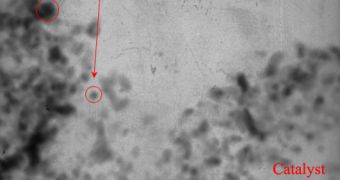Researchers have recently demonstrated a new type of polymer, that can easily remember up to four different shapes, and which can revert to each of them depending on the temperature it is being subjected to at a particular time. Needless to say, such a material has tremendous potential, for applications in fields ranging from space exploration to biotechnology and the electronics industry. The shape-memory polymer is a substance known as perfluorosulphonic acid ionomer (PFSA).
The thing about some polymers, that allow them to revert back to certain shapes, is the fact that they are made of repeating chains of identical molecules. This allows them to become sensitive to certain external stimuli, including temperature, moisture level, or magnetism. If they change in direct correlation to one of these factors, than the next time the external stimulus will be applied, the polymer will revert to the initial shape it had when it was first exposed to it. Though these materials have been available for a couple of decades, thus far they were only able to remember two or three shapes.
The American space agency NASA had a plan to use them for deploying antennas and other devices on spacecrafts and satellites, but this limitation prevented it from doing this. Doctors have also considered using memory-shifting polymers, but this time to create artificial stents for blood vessels. These implants would have the ability to change their shape inside veins and arteries, and potentially clear clogs, before finally being absorbed by the organism. With the recent advancement, which sees the number of possible shapes to be memorized rising to four, these applications and more could become available for research.
What makes PFSA stand out from other materials of its type is the fact that it can be assigned to change at four custom temperatures, of the manufacturer's choice. The only condition that needs to be met is that the gap between the four temperatures is large enough to avoid “confusions.” The new work was conducted by General Motors research scientist Tao Xie, who is also the author of a new study detailing the findings. The paper appears in the March 10 issue of the respected scientific journal Nature, LiveScience reports.

 14 DAY TRIAL //
14 DAY TRIAL //